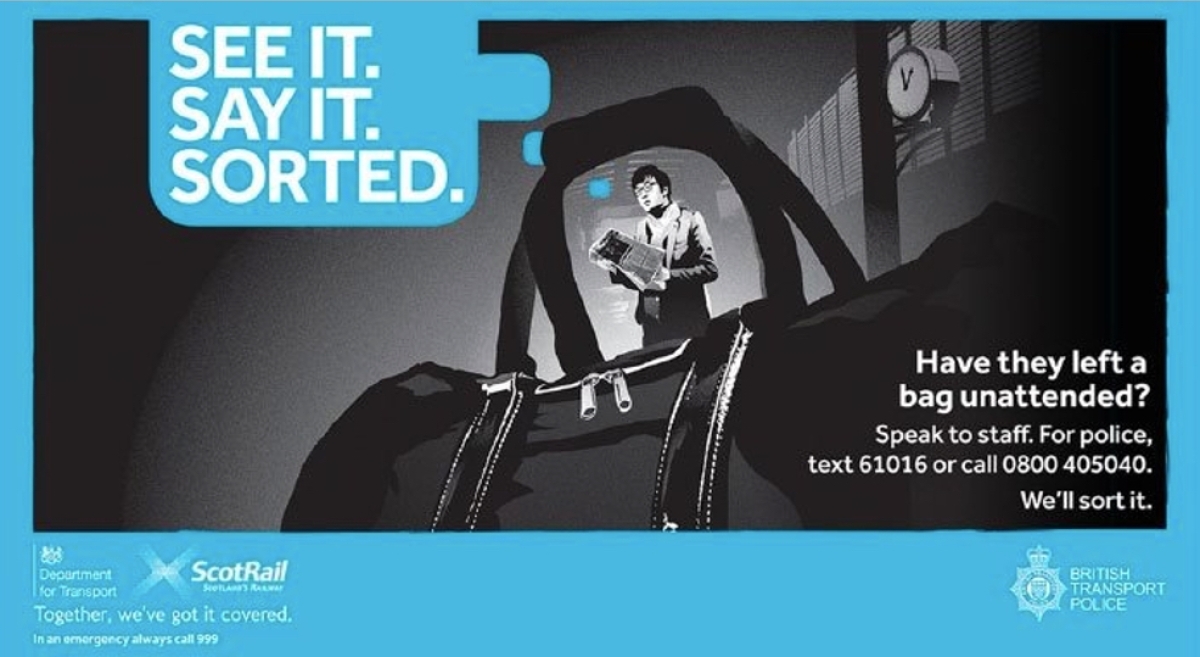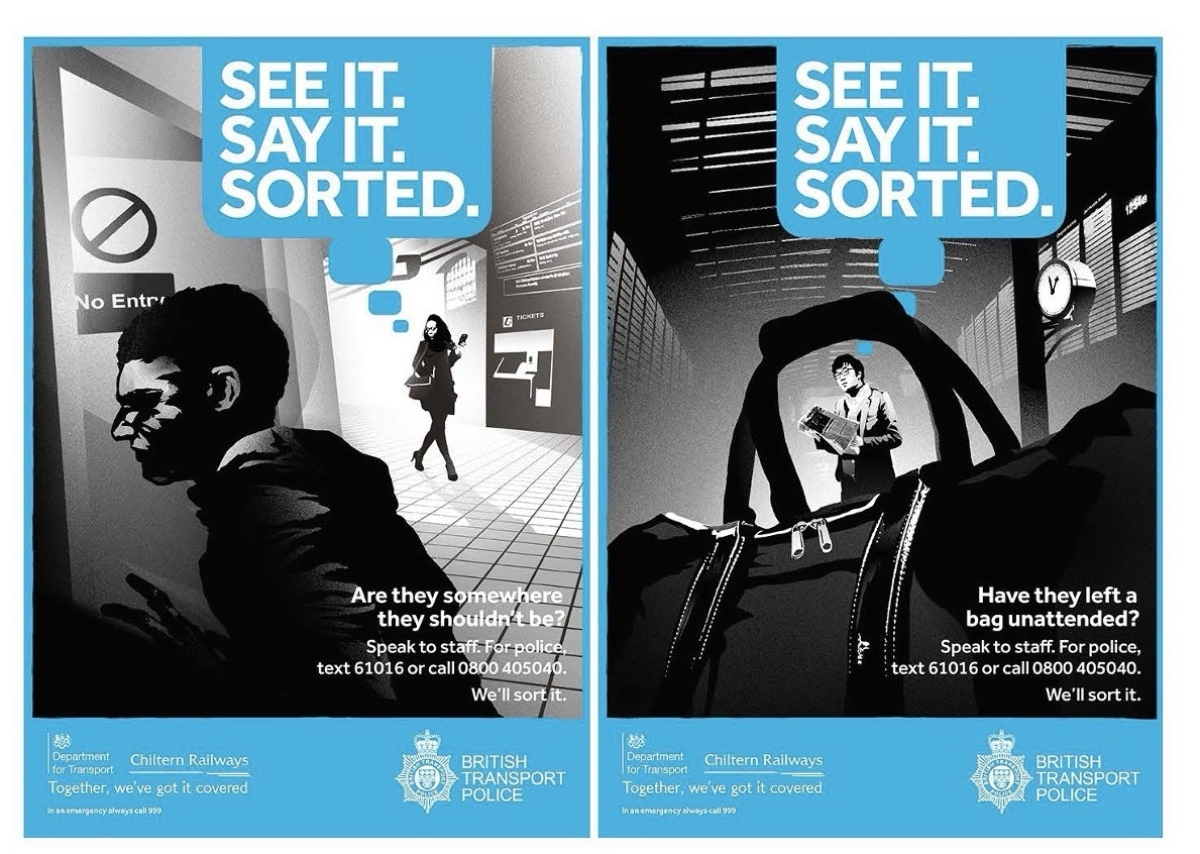Is "See It, Say It, Sorted" the most effective (and hated) public safety campaign ever?

We’ve created a lot of highly successful campaigns at AML. But one has taken on a life of its own, become synonymous with travel in the UK, and brought praise and scorn in equal measure.
Five words have kept travellers safe, stopped terror attacks, become part of popular culture, and attracted the ire of journalists and commuters. It’s quite an achievement for such a simple idea.
Terrorism has made keeping people safe as they go about their daily lives harder and more complicated.
Transport infrastructure – especially the rail network, with millions of journeys every day – is especially vulnerable, as the multiple bombings of 7/7 in London and other attacks before and since have made clear. Transport staff and security services are vigilant but can’t do it alone.
Reporting by passengers themselves is by far the most effective way of detecting and preventing terror attacks. However, research showed that rail users didn’t know how to make a report if they saw something unusual and were not confident their reporting would be acted on. Most of us would rather just get on with our journey, our music, our podcast.
So, an awareness campaign was needed.
One that encouraged transport users to be aware of anything unusual around them, gave them an easily-remembered way to report it, and most of all would give them confidence that their reporting would reach the right people and be acted on. The campaign needed to permit individuals to take responsibility for everyone’s safety.

At AML, we had worked with CPNI (now NPSA) on safety campaigns before so understood the importance of the brief.
Several creative routes were developed and tested with ‘See It, Say It, Sorted’ emerging as the clear winner.
In just five words it provided trigger, action and response using the effective triple-step structure that has since become typical of other public service campaigns, notably during the Covid pandemic.
Announcements, advertising and social media launched the campaign, along with the 61016 SMS contact number for the British Transport Police. It rapidly got noticed, increasing reporting in just its first year by nearly four times. That reporting has prevented a number of late-stage attacks, as well as helping to detect many more threats and criminal actions.
The campaign has now become a part of London life, celebrated by tourist souvenirs, copycat campaigns and comedy routines.
It has been immortalised by rappers, graffiti artists, and a classical choir. A station announcement collector in Japan (of course) says it’s the best public service announcement in the world. Eminent journalists have expressed frustration with its lack of correct grammar (although ‘sorted’ is a deliberate shift from inviting action to its resolution, making the phrase more memorable). The Guardian asked if it was the least popular campaign in Britain.
Love it or hate it, See It, Say It, Sorted is now one of the most successful public information campaigns ever.
There’s an argument that it reflects divisions in society, but it has undoubtedly saved lives and prevented attacks on the travelling public. Some people will be dismayed to hear that the Department for Transport will soon be rolling out a refreshed campaign – others will be delighted.

If you enjoyed this article, you can subscribe for free to our weekly email alert and receive a regular curation of the best creative campaigns by creatives themselves.
Published on:





